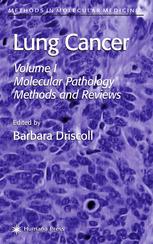

Most ebook files are in PDF format, so you can easily read them using various software such as Foxit Reader or directly on the Google Chrome browser.
Some ebook files are released by publishers in other formats such as .awz, .mobi, .epub, .fb2, etc. You may need to install specific software to read these formats on mobile/PC, such as Calibre.
Please read the tutorial at this link: https://ebookbell.com/faq
We offer FREE conversion to the popular formats you request; however, this may take some time. Therefore, right after payment, please email us, and we will try to provide the service as quickly as possible.
For some exceptional file formats or broken links (if any), please refrain from opening any disputes. Instead, email us first, and we will try to assist within a maximum of 6 hours.
EbookBell Team

0.0
0 reviewsMolecular-based laboratory methods can help significantly in the diagnosis and treatment of lung cancer, a leading cause of death worldwide. In Lung Cancer, Volume 1: Molecular Pathology Methods and Reviews, leading physicians, scientists, and noted researchers review novel methods for determining the etiology of a variety of lung cancers and present readily reproducible techniques for examining the associated multitude of genetic abnormalities. The methods described make it possible to detect these alterations at the cellular, DNA, and protein levels, to study the development of lung cancer in vitro and in vivo-either in situ or in the form of metastases-and to test targeted therapies with detailed model systems. An animal models section gives explicit instructions for setting up and testing these systems, which are rarely described in the literature. A companion volume, Lung Cancer, Volume 2: Diagnostic and Therapeutic Methods and Reviews, concentrates on diagnosing lung cancer through molecular analysis of clinical samples and providing a variety of novel therapies.
Comprehensive and informative, Lung Cancer, Volume 1: Molecular Pathology Methods and Reviews illuminates the etiology of lung cancer and provides reliable techniques for detecting the responsible genetic mutations at the cellular, DNA, and protein levels. Together, the two volumes constitute an unprecedented resource for those who wish to better understand how this disease is being diagnosed and treated and what novel techniques may be available to improve both processes.